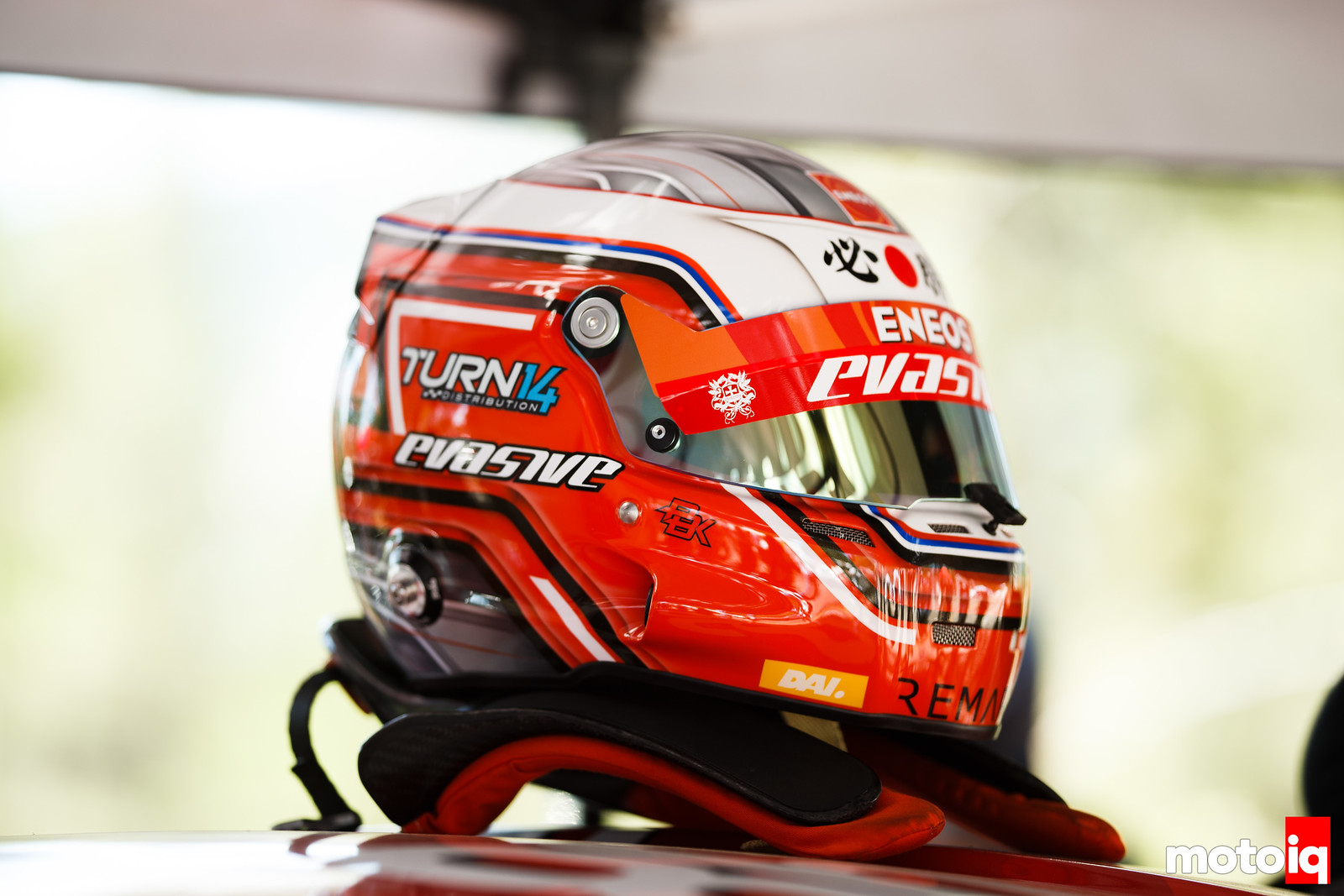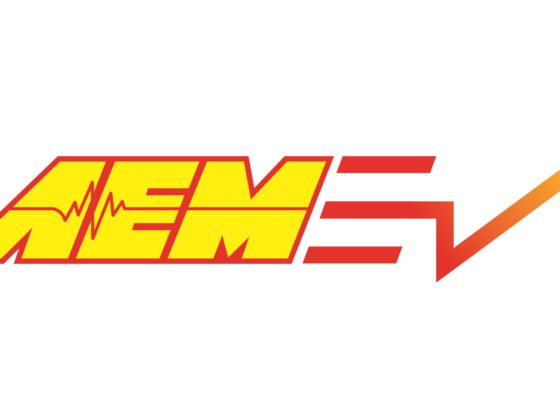 Action Photography by Larry Chen, Pit and Kitchen Action by Ed Liu
Action Photography by Larry Chen, Pit and Kitchen Action by Ed Liu
So close but yet so far, that was the end of the Evasive Motorsports 2019 Pikes Peak effort. After a very successful series of practice runs, the teams Toyota 86 was consistently second in times in the three different practice sectors of the course. The car was running flawlessly and the suspension, engine management, and traction control systems were getting pretty dialed in. As the big day approached, the team was excited and confident that good results were a high probability. However, in racing and warfare, the results are not always predictable no matter how good the preparation is.

Thanks to our friends at Polyphony Digital, a title sponsor of the event, we had the first pit space to the start line. Like we were explaining before, the distance between your pit and the starting line is critical for tire temperature and pressure management. Since you have to go flat out from the start, if you need to spend time warming up your tires and brakes you just lost. In the cold air with ice-cold pavement even with tire heaters, it is hard to leave the line with the tires at a good temperature and at the right tire pressure.

With the cold air temperatures, we had to start heating the tires more than an hour ahead of time, starting with the whole assemblies covered in blankets in the trailer. After the temperatures are close the tires and heaters are moved out and installed on the car with the temps and pressures being carefully monitored.

Getting the temps and pressures is so critical, Kelvin and I have to really stay on top of it especially in the final minutes up to start time. We run nitrogen in the tires because it is twice as stable as regular air pressure wise. The art of selecting the right start tire conditions is pretty much a crapshoot. It is cold, the tires are getting cold as the car rolls to the start, as it gets cold the pressure drops, as the car leaves the line, the temperatures will climb for a few minutes, maybe. As it gets colder and colder up the mountain, the tires may get colder and loose grip even though they are being beat on. As the tires cool, the elevation rises and the outside pressure drops. So as the tires lose pressure due to cooling the thinner air as the car climbs also causes the pressure inside the tires to rise. Guessing what is going to happen to the tires on their way up the mountain is a crapshoot and there are no hard and fast rules. We had done air temp and road temp studies going up the mountain from our support vehicles and even took a tire and checked the pressures along the way to see what would happen. We also looked at our practice notes to see how the tires actually behaved in each segment of the course. Of course, this was different in each section but all the data could be condensed and a good guess for the initial tire temps and pressures be arrived at.
Kelvin and I had decided to leave the pits at 190 degrees and 17 front and 19 rear psi of pressure. We figured waiting even in the short line would drop the temps to around 150 degrees by the time the car was away. We sort of messed up and the car left the line almost as soon as we took the tire warmers off and got to the staging area. This caused the temps to be a little too high and Dai reported that the tires were initially a little greasy and not as fast as they could have been. Oh well, a little cloud cover or wind and the story might have been different!




12 comments
Hate having weird mechanical failures like that; that’s racing though.
A lot of the stuff you’re mentioning with temperatures and pressures is really weird; it truly is a different sort of place. Since I’m kind of a data weenie, I’m curious how much DAQ you’re running and if you were finding stuff in the actual run that was massively different to the practice runs.
We have everything for the motor and TC but no suspension pots, etc. I think the most useful thing that we didn’t have would have been turbo shaft speed. I think that has to be managed and monitored carefully.
Interesting – not going too much into what’s your IP, but do you just feel like you have a pretty good suspension baseline / knowledge base on the BRZ from work with it over the years?
Thanks for all that you’re sharing on this – I really do like seeing all of the behind-the-scenes work that’s going into an effort of this scale. Hope that things work out where you guys get another shot at it!
Yeah I know enough to tell you that the FR-S and BR-Z have awful suspension geometry, much of which is damped out by suspension tuning and can actually feel pretty good with minuscule power and grip. The stock suspension problems are toe steer and too much negative camber gain in the rear with too much anti. Too much bushing compliance. General flimsy construction. Weird Ackerman curve. When you up the power to big-time and put big tires on, the car can become almost undrivable.
The Pikes Peak car is sort of the opposite of what the old-timers say to do. We were advised to make the car, high and soft. Instead the car is low and very stiff. In fact, we run the same spring rates we used to win Super Lap Battle a couple of weeks ago. We need to run the car low to make the most out of our limited aero package. Our sorta secret under-car aero needs a low ride height to work. In fact, the difference between Pikes Peak and Time Attack is we run 12mm higher at Pikes Peak to keep the undercar aero off the ground in the bumpy upper part of the course.
One well known Porsche Chassis guy was saying that our setup was bad and he feared for our driver’s life and our car was sparking all over the place. Those were the Ti rub studs. I was pretty happy that our car seemed to be taking bumps better than the other cars I was watching! A lot of this is due to our working with KW suspension on our dampers and our experience at dialing them in.
It seems like a lot of modern cars get away with bad suspension geometry through damper/spring/etc tuning. Of course, older stuff tended to have issues that were just masked by bad tires, and here I’m glaring at the 1st gen RX-7 rear suspension…
Sounds a bit like stereotypical tuning for a downforce car in what you did – or one theory that I’ve heard put sorta like “any geometry can be OK if you don’t let it move much”.
We actually redid the geometry of this car quite a bit. We went from about half an inch toe-out under compression to slightly toe in and we got rid of most of the anti-squat. In the front, we got rid of a lot of the anti-dive and most of the bump steer. With the wide and stiff slicks, this car was really sensitive to toe steer and bump steer. It went from almost undrivable to a good handling car. Our front and under-car aero stuff made a pretty good difference too.
Any idea what Subaru was trying to do with the stock geometry? Something about optimizing for 5/10ths on street tires or something, maybe? It seems like in this day and age there’s too many tools to do analysis to assume that the designer didn’t have something in mind, whether or not it’s what enthusiasts or racers would prefer.
I think that perhaps the parts bin engineering thing either messed up or what happens when we try to put bearings or stiff bushings in a suspension that uses kinematic bind and flex of the OEM bushings to point the wheels in some weird direction. In this day and age where CAD is so good that we can do great stuff at home, I am often incredulous and what a bad job OEMs do with geometry! I guess this keeps me in business.
Mike, would a factory type TPMS system provide enough accuracy to track/datalog tire pressures throughout the race? Would be interesting to know if there are any aftermarket options for using that info.
Possibly but I don’t think we have enough channels. The important stuff is what you start at and what you end up at because you can’t do anything about the middle!
https://trailbrake.com/tire-tpms/ is the only remotely affordable loggable TPMS I’ve yet found. Not used it, no experience with it, but at an order of magnitude less than the next least expensive option I intend to give it a try.
I want shock pots first then these would be interesting.